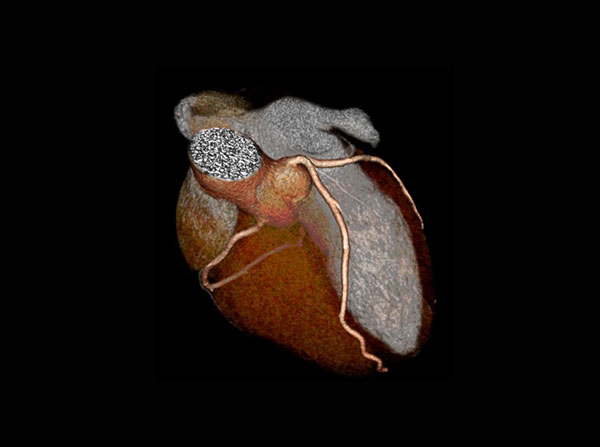USC leads research into link between high inflammation and narrowing of the arteries

Researchers use CT scans to detect signs of subclinical coronary artery disease. (Photo/Multicenter AIDS Cohort Study)
A cardiac imaging study showed a correlation between higher inflammatory biomarkers and an increased prevalence of coronary artery disease (CAD) in men infected with human immunodeficiency virus.
CAD is a narrowing of the arteries, likely due to the presence of calcified and non-calcified plaque. The findings were published in the Journal of the American Heart Association.
Researchers examined nearly 925 men, 575 of whom were infected with HIV, from the Multicenter AIDS Cohort Study. The researchers used computed tomography (CT) angiography to detect signs of subclinical CAD, such as narrowed arteries and the amount, density and calcification of plaque.
Participants were also measured for the presence of seven inflammatory biomarkers. This study, which was funded by the National Institutes of Health, is the largest coronary CT scan imaging study on men infected with HIV to date.
“We found that men infected with HIV had higher levels of inflammatory biomarkers than men who were not infected,” said Hossein Bahrami, assistant professor of cardiovascular medicine at the Keck School of Medicine of USC, who led the study along with six other institutions. “There was a strong, independent association between the presence of these inflammatory biomarkers and subclinical CAD detected by CT scan. Although this study does not definitely prove the causal relationship between these markers and heart disease, it is suggestive of a possible role that persistent inflammation
At greater risk
HIV-infected individuals are at an estimated twofold higher risk of CAD compared to those who are not infected with HIV. The development of antiretroviral therapy has significantly prolonged the life spans of those living with HIV infection. However, they are more prone to chronic illness, such as cardiovascular disease and CAD, and they present at a younger age. These factors combined have made research into treating chronic illness in men with HIV all the more important.
The CT imaging was crucial to this study, as researchers were able to detect subclinical CAD in a younger population rather than waiting until participants exhibited clinical symptoms. Moreover, researchers were using a broader set of inflammatory markers than in past studies, which provides more information about inflammatory pathways involved and potential causes for inflammation.
“Inflammation has only recently been studied as a possible reason for chronic heart disease,” Bahrami said. “Confirming the relationship between HIV-related inflammation and the marked increase of CAD among men infected with HIV allows us to move forward in our attempts to better manage the health of these patients according to their specific medical needs.”
In ongoing research efforts at the Keck School of Medicine, Bahrami and others are also using cardiac magnetic resonance imaging to study the changes in heart muscle, as well as details of coronary artery function in men affected by HIV. This advanced form of imaging evaluates several features of the heart that could not be evaluated with cardiovascular CT scans. This ongoing project is significant, as HIV-infected patients appear to have even higher risk of abnormalities in the heart muscles compared to their increased risk of coronary artery disease.
Bahrami’s research hopes to illuminate what causes HIV-related inflammation, as well as identify specific pathways involved and the best means of treatment or management of heart diseases in HIV patients.
By Mary Dacuma